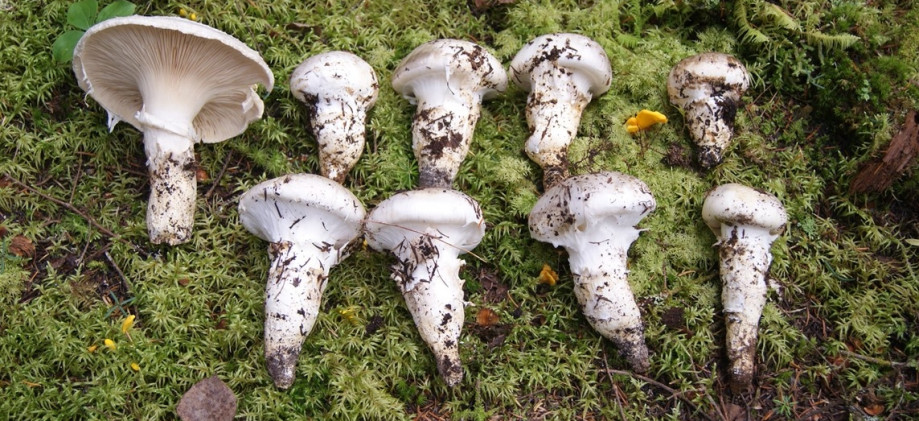Edible, therapeutic and toxic mushrooms

Habitat
The Large-stemmed Armillaria flourishes in the transitional forest climatic zone. It is common in plantations and stands of White and Norway Spruce; it can also be picked in stands where there are pine, fir and hemlock, from late summer through September. It is rarely found in the boreal forest and only occasionally in the deciduous forest.
Cap
Convex at first and then spread out, smooth, of pale color and covered in places with darker patches.
Stalk
Equal, tappering at the base, often swollen in the middle, white above the ring and tinted brownish under this double ring.
Unfit for human consumption
It is preferable to harvest at the button stage, when the quality of the stem’s flesh is comparable to that of the cap. To obtain fruitbodies of the highest quality, it is best to pick these mushrooms as the cap emerges from the ground. By the time the cap is fully open and the gills have turned brown, the fruitbodies have lost much of their quality and become unfit for consumption.
Comments
Send a comment
Few flying insects lay their eggs on the fruit bodies of the Large-stemmed Armillaria; however, nematodes and larvae of insects that live in the soil, like the wireworm, cause significant damage. In addition, they are occasionally visited by slugs.
English names: Large Stemmed Armillaris, Swollen-stalked Cat.
Latin names: Catathelasma ventricosum, Biannularia ventricosa, Armillaria ventricosa, Lentinus ventricosus.
For more informations
Formation
For those who wish to improve their knowledge, register for the Foundation's training program on this site and receive a certificate confirming the fruit of your efforts.















































